Understanding and applying effective generalization techniques for children with autism can be quite the journey for both the child and their caregivers. 🌟 These strategies not only help young learners transfer skills across different environments but also boost their independence and social interactions, making their daily lives richer and more fulfilling.
But here’s the question: how can parents and educators weave these techniques into everyday situations? 🤔 This article dives into ten impactful strategies that connect therapy with real-life applications, offering insights and actionable steps to foster skill generalization in children with autism. Let’s explore this together!
At Rori Care, we understand that every child is unique, and that’s why we take a data-driven approach to create personalized ABA therapy plans. We focus on effective generalization techniques for children with autism that truly make a difference! By closely examining each child’s strengths and challenges, our clinicians can implement effective generalization techniques for children with autism that assist kids in transferring their skills across different environments.
Imagine your child not just learning new abilities but actually using them in real-life situations! This kind of support boosts their independence and social interactions, making a world of difference in their daily lives.
We’re here to help you every step of the way! If you’re curious about how personalized therapy can benefit your child, let’s explore this together!
Visual aids like schedules, charts, and pictorial cues are such valuable tools for helping individuals with autism, ADHD, and other behavioral challenges. They provide clear, concrete representations of tasks and expectations, which can really ease anxiety and boost understanding for both kids and their parents. Did you know that most autistic students are visual learners? This means they often grasp information better through visuals than through listening.
For example, using a visual schedule can make transitions between activities much smoother, reinforcing the skills learned during therapy in real-life situations. Studies show that classrooms that embrace visual strategies see a whopping 57% improvement in outcomes for autistic students! That’s a testament to how effective these tools can be in promoting engagement and understanding.
Plus, visual schedules have been linked to better independent performance and fewer challenging behaviors during transitions. They truly are a key part of autism therapy. Recent research emphasizes the need to weave visual aids into educational settings, as they not only help with effective generalization techniques for children with autism but also enhance the overall learning experience for kids who benefit from behavioral interventions.
Let’s explore this together! By incorporating these strategies, we can create a more supportive environment for our children.
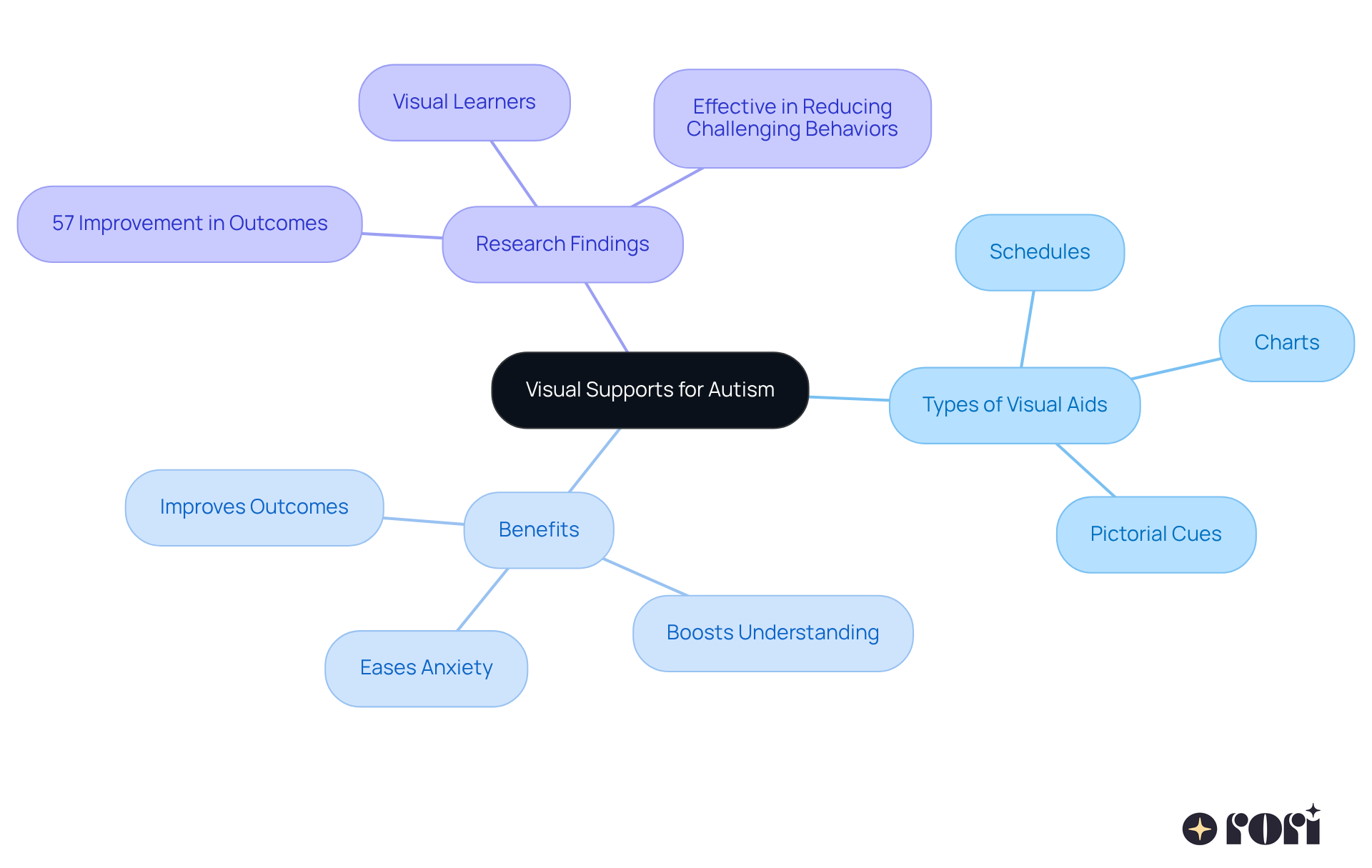
Peer modeling is such a fantastic approach! It uses typically developing peers to show off the right social actions and techniques, which can be a huge help for kids with autism. By observing and imitating their peers, these youngsters can really boost their social skills and learn to apply them in different situations. For instance, during group activities, kids can pick up essential skills like sharing and taking turns just by watching their friends in action. Research shows that peer-mediated interventions (PMIs) can lead to significant improvements in social interactions. In fact, studies reveal that peer models often receive way more friendship nominations than non-peer models, proving how effective they are in building social connections.
But that’s not all! The structured nature of PMIs, which often includes teaching peers specific social games, has been shown to be one of the effective generalization techniques for children with autism, enhancing their social motivation and communication skills. These interventions are implemented with high fidelity, with reports showing effectiveness rates between 86% and 94%. This means the strategies are really making a difference in real-world settings! Therapists emphasize that using effective generalization techniques for children with autism, including peer interactions in ABA practices, not only helps with learning but also fosters a sense of belonging and connection. This ultimately enriches their social experiences and improves their overall quality of life.
At Rori Care, our dedicated clinical leadership team, made up of qualified analysts, focuses on creating personalized behavior intervention plans that utilize effective generalization techniques for children with autism. We’re here to ensure that each child’s unique needs are met while empowering caregivers to actively participate in their development. Let’s explore this together!

Incorporating real-life situations into therapy sessions is crucial for implementing effective generalization techniques for children with autism, enabling young people to practice skills they'll use outside of therapy. For example, having a young person ask for food at a restaurant during a session can really boost their confidence when dining with family or friends. This approach not only reinforces learning but also builds their self-assurance in applying effective generalization techniques for children with autism across various situations.
Clinicians emphasize that effective generalization techniques for children with autism rely heavily on the context where skills are practiced, which plays a significant role in how well a young person can use them in everyday life. Did you know that research shows kids who went through multiple exemplar training had a 67% improvement in effective generalization techniques for children with autism compared to those who only had single-exemplar training? Plus, when caregivers are actively involved and the recommended hours of effective generalization techniques for children with autism are fully implemented, about 90% of kids make significant progress!
By incorporating effective generalization techniques for children with autism into therapy, young individuals can tackle real-world challenges more effectively, leading to greater independence and better social interactions. To support your child's learning, think about practicing these scenarios at home. Role-playing restaurant visits or grocery shopping can really help reinforce their skills in a familiar setting.
Additionally, equipping caregivers with effective generalization techniques for children with autism and ABA principles can enhance their ability to provide consistent support. This ultimately leads to better behavioral outcomes and a more effective learning environment for your child by implementing effective generalization techniques for children with autism. Remember, ABA intervention is the only scientifically validated treatment for autism that insurance covers, which speaks volumes about its credibility and importance.
Let’s explore this together! Practicing these skills at home can make a world of difference!
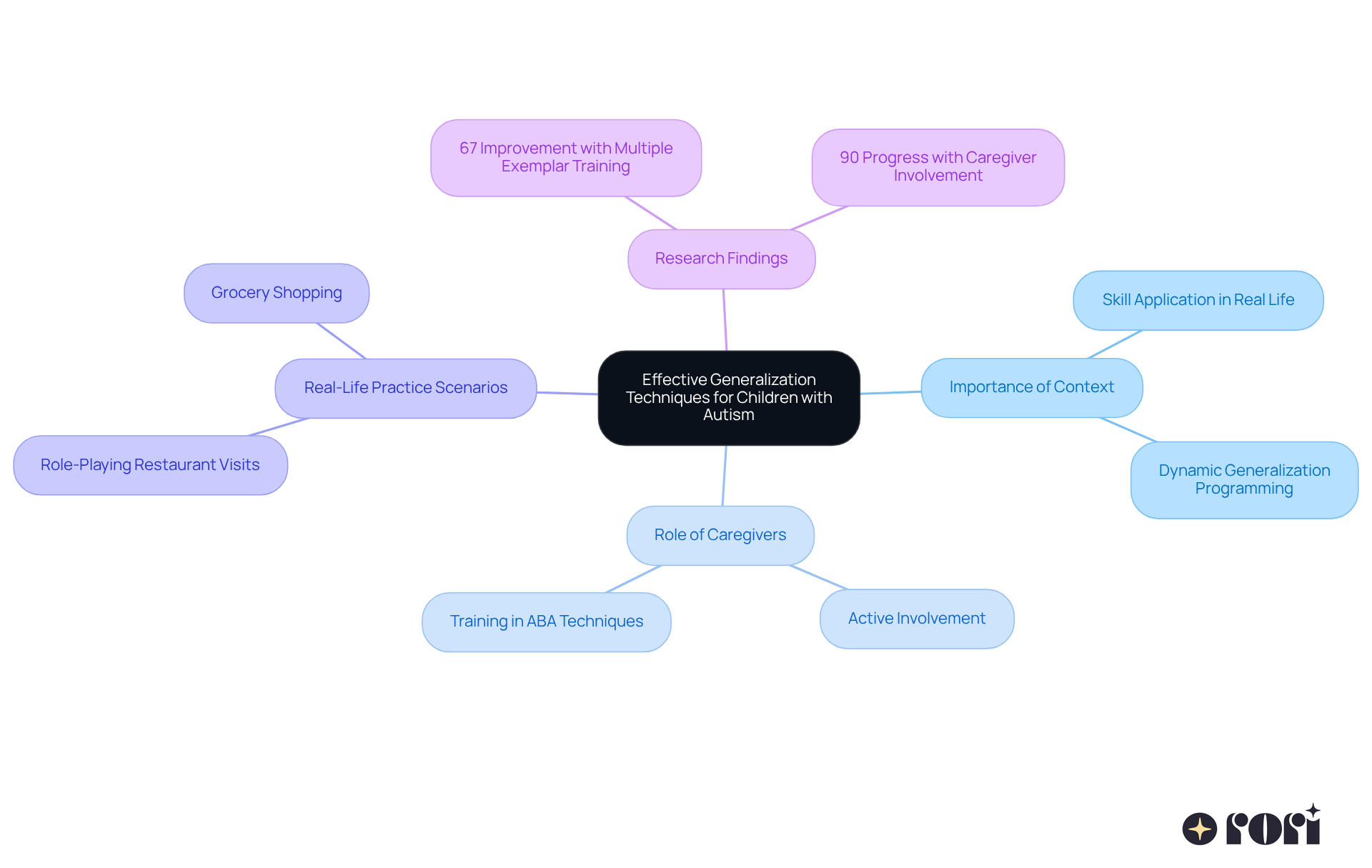
Active parental engagement is vital for helping kids with autism strengthen their skills and utilize effective generalization techniques for children with autism in their everyday life. When parents practice skills at home using the same language and methods introduced in therapy, it really makes a difference! For instance, if your child learns to greet others during sessions, you can encourage this behavior at family gatherings. This way, they get to practice their skills in different social situations.
Did you know that studies show 90% of kids make significant progress when caregivers actively support strategies in real-life settings? That really highlights how crucial family involvement is in the therapeutic process! Therapists often emphasize that when parents participate, it helps in implementing effective generalization techniques for children with autism, bridging the gap between treatment and daily life. By creating a collaborative environment, you not only boost your child’s confidence but also help foster lasting behavioral changes that go beyond therapy sessions, which can be achieved through effective generalization techniques for children with autism.
Plus, caregiver education plays a big role in this journey. It equips you with the knowledge and skills needed to provide effective support, leading to better behavioral outcomes. When you feel empowered, you can make informed decisions that positively impact your child’s progress. Let’s explore this together! We’re here to help you every step of the way!
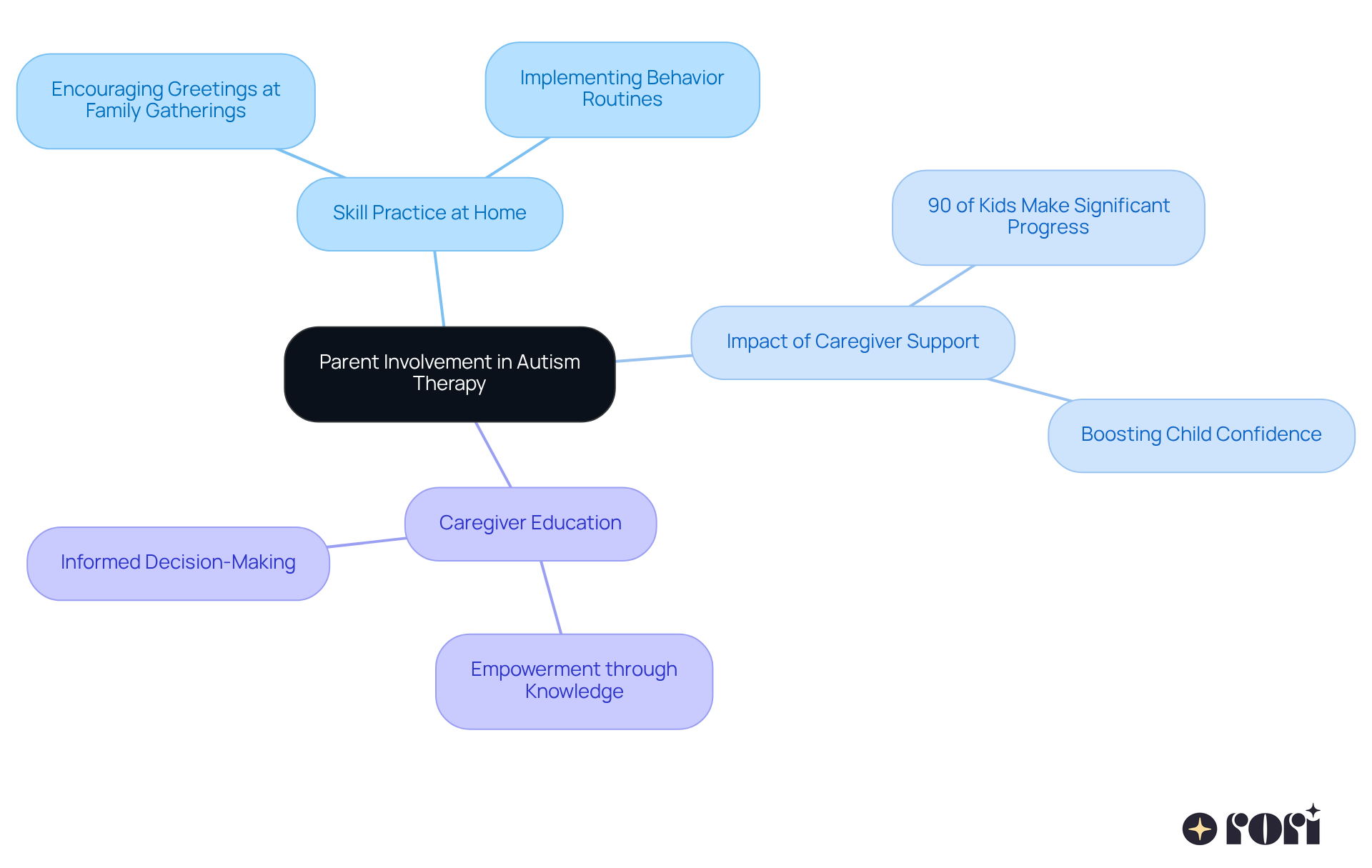
Tracking data effectively is so important for seeing how a young person can use their skills in different places, like at home, school, and in the community. By keeping a close eye on when they show what they’ve learned, clinicians can spot patterns and tweak treatment plans as needed. At Rori Care, we make sure that every behavioral strategy is tailored to fit the unique needs of each child, setting clear and measurable goals for behavior changes and skill growth.
Research shows that kids who get regular support and personalized interventions make great strides in their adaptive skills, with an impressive success rate of 89% in ABA treatment. Even more encouraging, 47% of children in ABA therapy become indistinguishable from their peers, showcasing just how effective these interventions can be! Our behavior analysts use evidence-based strategies rooted in the latest research, ensuring that our approaches stay relevant and impactful.
Clinicians stress that ongoing data analysis is key. It not only helps identify when effective generalization techniques for children with autism are achieved but also enhances the overall effectiveness of therapy. When interventions are responsive to a child’s progress, families can look forward to better outcomes, fostering independence and skill development in their children.
Plus, our AI-driven behavior care engine updates intervention and skill acquisition plans after each session based on progress made. This equips caregivers with essential ABA principles and strategies to support their child’s behavioral goals. Let’s explore this together! We’re here to help you every step of the way!
![]()
Organized routines play a crucial role in helping kids with autism understand what’s expected of them and ease their anxiety. This, in turn, helps them transfer their skills more effectively. For instance, think about a regular morning routine that includes specific activities - like getting dressed and taking care of personal hygiene. It creates a familiar environment where they can practice important skills.
Did you know that research shows kids with established routines have a 47% chance of maintaining strong social-emotional health as they grow older? As these routines become second nature, they can be adapted to different settings, reinforcing the skills learned in therapy. This flexibility is key! It allows young individuals to apply their skills in real-life situations, boosting their independence and confidence.
Therapists emphasize that it’s vital for every caregiver to consistently use the same strategies. This consistency helps ensure that techniques are generalized effectively. By nurturing a structured environment, caregivers can significantly impact a young one’s ability to utilize effective generalization techniques for children with autism, paving the way for long-term success in their development.
Let’s explore this together! Your support can make a world of difference!
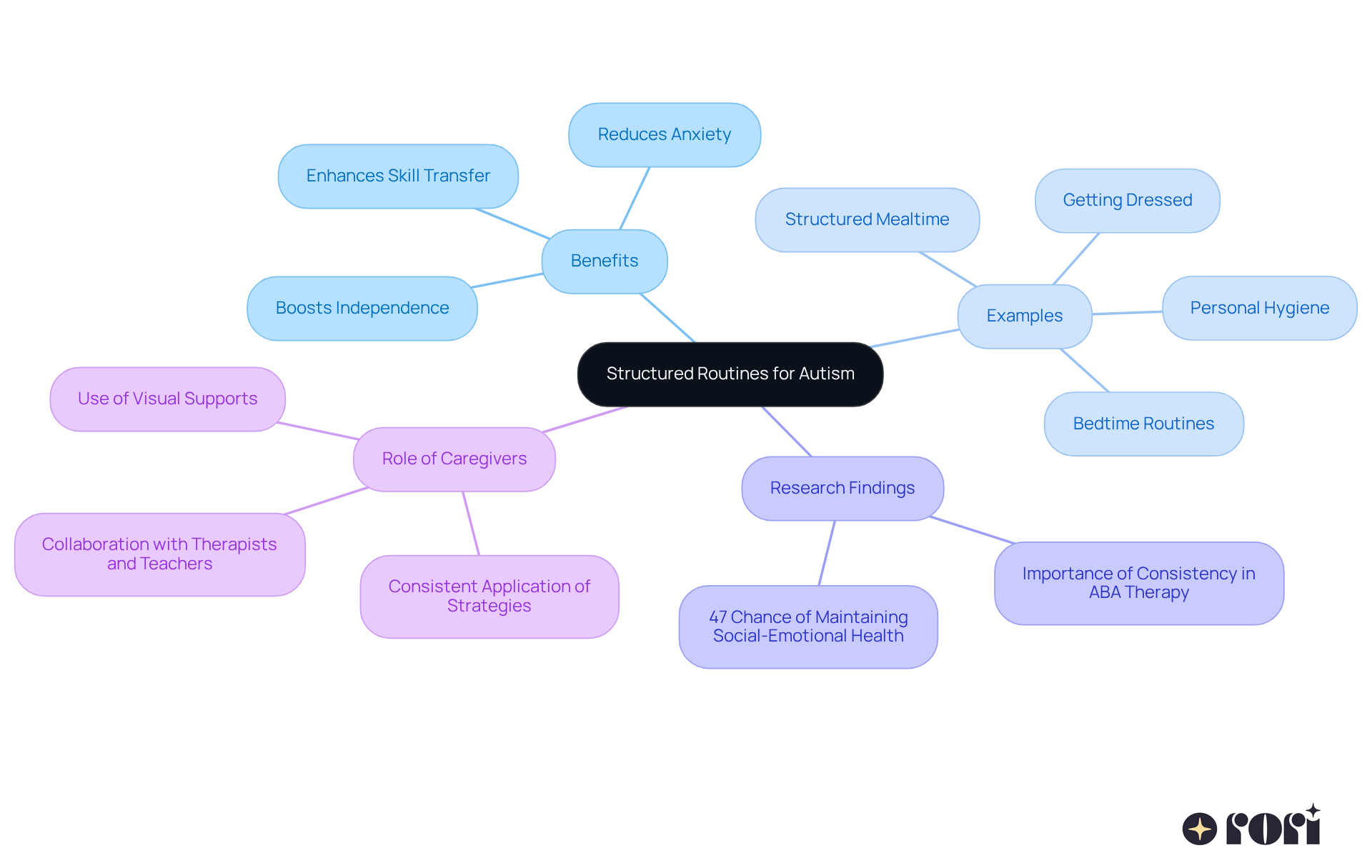
Motivating young learners can be a challenge, but effective reinforcement techniques can make a world of difference! 🌟 Positive reinforcement, like a simple word of encouragement or a small reward, can really inspire kids to use their skills in different situations. For instance, when you reward a child for using polite language, it not only reinforces that behavior but also helps them carry it into future interactions.
When caregivers understand ABA principles, they can align their reinforcement strategies with therapeutic goals. This means that the support at home becomes more consistent and effective. It’s amazing how this active involvement empowers caregivers! They become more skilled at recognizing and reinforcing those desired behaviors, which can lead to significant improvements in behavioral outcomes.
So, let’s explore this together! By sharing experiences and learning from one another, we can create a supportive community that helps our children thrive. We’re here to help you every step of the way!
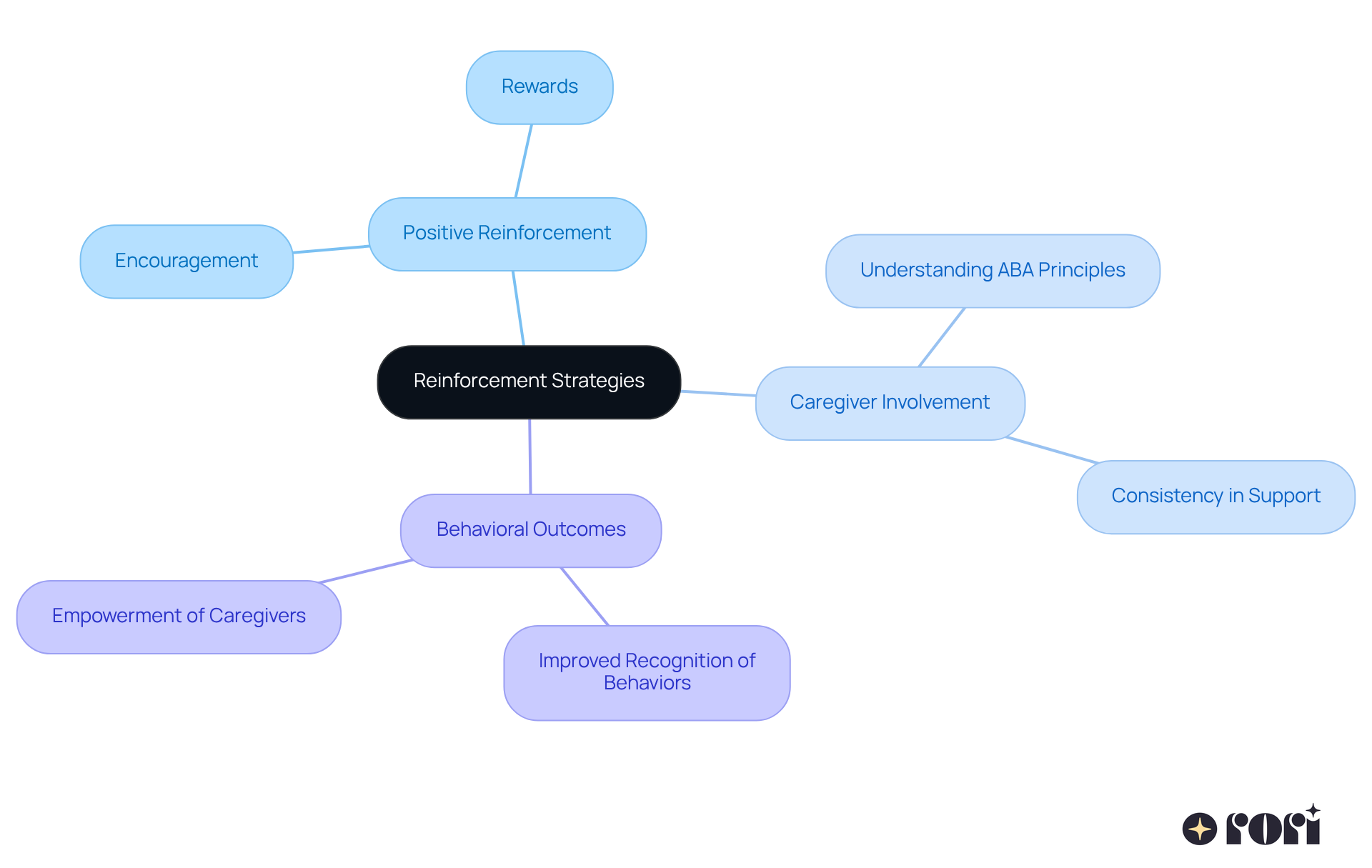
Cooperation between ABA therapists and educators is so important for helping kids generalize their skills in school. At Rori Care, we’re all about empowering your little one with the tools they need to explore the world independently. By sharing strategies and updates, both therapists and educators can ensure that kids get the consistent support tailored just for them.
For instance, when a young learner learns to raise their hand during therapy, teachers can reinforce this behavior in the classroom. This way, there’s a smooth transition between therapy and school. Studies show that kids who get support from both educators and ABA therapists tend to focus better during lessons and transition more easily between activities. This leads to greater independence and fewer challenging behaviors.
Effective teamwork not only enhances the learning experience for students but also eases the worries of families. Knowing that their kids are supported by a strong teacher-therapist partnership helps them transition more smoothly into middle school, high school, and beyond. As our clinical leadership team puts it, "When we collaborate, we create a supportive environment that helps youth thrive both academically and socially." You can really see this in the way kids connect with their peers and show fewer challenging behaviors.
This collaborative approach is crucial for helping individuals with autism apply effective generalization techniques for children with autism in various situations, ultimately boosting their growth and well-being. Let’s explore this together! We’re here to help you every step of the way!
Incorporating technology into ABA therapy can truly improve the effective generalization techniques for children with autism, influencing how kids generalize their skills. Think about it: tools like mobile apps, video modeling, and even virtual reality can turn learning into a fun and interactive experience! For example, using a video modeling app to show social interactions helps children visualize and understand the right behaviors. This way, they can more easily apply what they've learned in real-life situations.
Let’s explore this together! Imagine your child practicing social skills through engaging videos - they can see how to interact with others in a way that feels relatable and real. It’s all about making those connections, right? By using these innovative tools, we can support our kids by implementing effective generalization techniques for children with autism in a way that feels both effective and enjoyable.
We’re here to help you every step of the way! If you’re curious about how to integrate these technologies into your child’s therapy, don’t hesitate to reach out. Your journey in supporting your child’s growth is important, and together, we can make it a positive experience!

Supporting children with autism in skill generalization can feel like a big challenge, can’t it? But don’t worry, you’re not alone in this journey! By using effective generalization techniques, we can help our little ones apply their skills in different settings, making their daily lives more fulfilling. Think about it: when we integrate visual supports, peer modeling, and real-life scenarios, we’re not just teaching; we’re empowering them to thrive beyond the therapy room.
Let’s take a moment to reflect on some key strategies that can make a real difference:
Each of these elements plays a vital role in reinforcing what our children learn during therapy. It’s all about helping them navigate various environments with confidence. And remember, collaboration between therapists and educators is crucial. When everyone works together, we create a consistent support system that truly enhances outcomes for our kids.
As we wrap up, let’s remember that this journey is a team effort. Therapists, educators, and families all play a part in supporting our children. By embracing these effective generalization techniques, we can empower our kids to shine in real-world situations. So, let’s stay engaged, explore innovative tools, and keep those lines of communication open. Together, we can make a lasting positive impact on the lives of children with autism, helping them grow and thrive every step of the way! 💪✨
What is the approach taken by Rori Care for ABA therapy?
Rori Care uses a data-driven approach to create personalized ABA therapy plans, focusing on effective generalization techniques for children with autism by examining each child’s strengths and challenges.
How does Rori Care help children with autism apply their skills in real life?
Rori Care assists children in transferring their skills across different environments, enabling them to not only learn new abilities but also use them in real-life situations, which boosts their independence and social interactions.
What role do visual supports play in autism therapy?
Visual supports like schedules, charts, and pictorial cues help individuals with autism and ADHD by providing clear representations of tasks and expectations, easing anxiety and enhancing understanding, especially for visual learners.
How effective are visual schedules in educational settings for autistic students?
Classrooms that implement visual strategies see a 57% improvement in outcomes for autistic students, leading to better independent performance and fewer challenging behaviors during transitions.
What is peer modeling and how does it benefit children with autism?
Peer modeling involves typically developing peers demonstrating appropriate social actions, which helps children with autism improve their social skills by observing and imitating their peers in various situations.
What are the effectiveness rates of peer-mediated interventions (PMIs)?
PMIs have shown effectiveness rates between 86% and 94%, indicating that these strategies significantly improve social interactions and communication skills for children with autism.
How does Rori Care ensure personalized therapy for each child?
Rori Care's clinical leadership team, composed of qualified analysts, focuses on creating personalized behavior intervention plans that meet each child's unique needs while empowering caregivers to participate in their development.